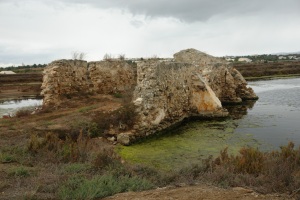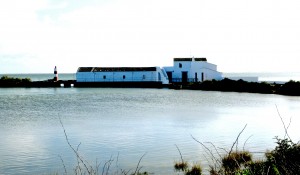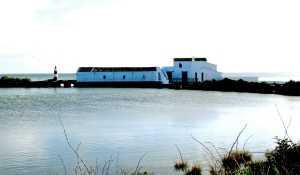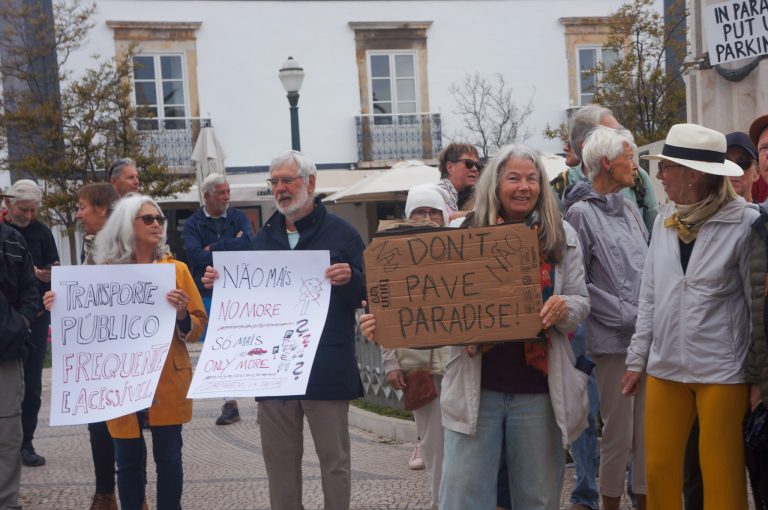The tide waits for no miller

The fascination with water mills, both tidal or river based abounds in literature. With the mill in the background, Victorian master painters record magical summer times. Mills tell us much about societies and their ability to harness natural forces. Although occasionally difficult to find now, as most are in ruins, many can still be identified all over Europe, sometimes hidden in rough ground or positioned in all their glory in an estuary. Some have pre Roman origins. In the eastern Algarve, there are examples of both types of mill. This article focuses on tidal mills, which are typically in this region, horizontal, long buildings.
Many tide mills, along with watchtowers, fortifications, hermitages and churches have been identified in the Ria Formosa nature park. The Ria Formosa includes the administrative districts of Loule, Faro, Olhao, Tavira and Vila Real de San Antonio. On such coasts, tidal mills were an essential part of early industrial processes. The tidal mill in the Ria Formosa near Olhao has been well maintained and restored unlike the one near Tavira which lies ruined, awaiting its restoration. The oldest known tide mill is in Castro Marim. It was mention in a Christian text in 1290. With the earthquake of 1755 almost all the mills, in the eastern region, were left in ruins. Many were partly restored or completely rebuilt, enabling us to have a better understanding of this aspect of social history.
A tide mill is a water mill that derives its power from the rise and fall of the tides. The rising tide flows through sluice gates into an enclosed area resembling a pond. As the tide turns and begins to flow out, the gates close automatically, trapping a large volume of water that can be used to power a water wheel. This power can then be harnessed to drive the grinding wheels within the mill itself.
Tide mills, when contrasted with wind mills have the advantage of not being dependant upon the strength or direction of the wind. Strong winds are often a hazard to the sails of windmills. Wind mills were cheaper to locate and build than water mills because sluice gates and a dam were not part of the mechanism. Over the long term, due to sail damage, wind mills may well have been more expensive to maintain. Although, it was a torrential rain, causing flooding, which threatened George Eliot’s Mill, in the “Mill on the Floss”.
The tide, while predictable, occurs at different times of the day. As humans we tend to follow the sun to determine our activities, but tide millers worked according to a tidal calendar chiefly determined by the moon. The lunar day being 24 hours and 50 minutes meant that during harvest and other peak times, all-night duties were common. During two daily incoming tides, a tide miller would need to split his night’s sleep into napping periods.
The miller’s duties included maintaining the mill as well as grinding and milling cereal. Usually living within or very close to the mill, he, (and it was usually a male occupation), worked according to local custom, the quality of the cereal and delivery deadlines. Regular maintenance of the mill stones was important as the ability to grind cereal continuously at peak times was essential. 50kg of grain would take about an hour to mill and with 6 stones operating together the noise; dust and speed of operation can only be imagined. The skills of the miller are also part of the heritage of the region.
The tidal mill near Olhao, Moinho de Marim, was built in 1865 and may be the last mill to be closed in the Ria Formosa in 1970. Mr Custodio Marcal, the miller, worked in the mill for 50 years. Having been born there, he learned the family skill. His knowledge helped in the restoration of this mill.
According to a recent European research project which has helped facilitate the restoration of some of the tidal mills of Western Europe:
“This is a rodete type mill (curved blades with enclosed rim), equipped with six sets of millstones, one of them used to mill barley. Its mill pond has an area of 14 hectares. It is situated in the old Marim farm, which belongs to the Instituto de Conservacao da Natureza. It is also the headquarters of the Parque Natural da Ria Formosa and the Centro Ambiental de Marim. The mill has been restored and reopened to the public and now fulfils an important educational role”.
The setting and ambiance of tide mills is a key factor in their overall sustainability and restoration. There are concerns that modern health and safety rules may mean the exclusion of the public, if these mills begin to demonstrate their historical bounty. Social historians hope that health and safety measures do not interfere with the character of the building and that common sense will prevail in the application of community directives designed for modern industrial food preparation, not traditional processes. These are examples of alternative energy that need to be safeguarded.
April 7th is water mill day and a river water mill will be the theme of my next article.
Bibliography
Special thanks to Marta Santos at Museu Municipal de Tavira / Palácio da Galeria, for her enthusiasm and help.
A list of tidal mills in Portugal can be found on the research website. http://www.moinhosdemare-europa.org/
Os Moinhos de Mare da Ria Formosa by Luis Filipe Rosa Santos
Much more detail concerning the working parts of the tide mill, including o rodete and a tolda are explained in this Portuguese book.
Ocean Energy Tide and Tidal By Roger H. Charlier, Charles W. Finkl
The Horizontal Water-Mill at Dounby, Orkney by Stewart H. Cruden http://ads.ahds.ac.uk/catalogue/adsdata/PSAS_2002/pdf/vol_081/81_043_047.pdf
Practical essays on mill work and other machinery by Robertson Buchanan, Thomas Tredgold, Robert Willis, James Nasmyth



Great ideas and new, improved technology is coming to the renewable energy field at a fast pace. Even with the setbacks, alternative energy will soon overtake oil.